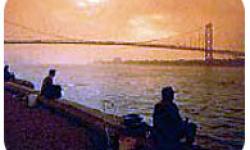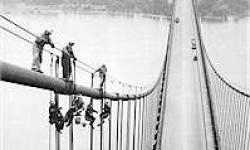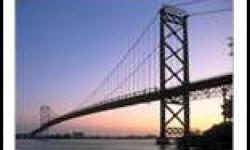The 1920s inspired those with courage or hard cash (or connections to it) to forge a world that only superlatives could describe. The "War to end all wars" was won, and the powers of politics, science and industry to erase mankind's other ills were in evidence.
This was also a time for building. Detroit's Penobscot Building, the General Motors Building, the Fisher Building, the Detroit Public Library, the Henry Ford Museum and Greenfield Village, Masonic Auditorium, the Buhl Building and Police Headquarters on Beaubien were only part of the construction that was reshaping Detroit's skyline.
In this climate, John W. Austin approached financier Joseph A. Bower, a Detroiter, in Bower's offices at the Liberty National Bank in New York City.Austin was an officer of the Detroit Graphite Company, and his aim was to secure a contract to paint such a Bridge as might, inevitably, span the Detroit River.
The Ambassador Bridge witnessed a repainting of all the toll plaza structures from black to green and white. The glossy black Bridge would have to stay black, though. An experiment in the late 1950s, in which a portion of the span was painted aluminum, found that the heavy downriver pollution quickly covered the bright aluminum paint with a sooty black.
With cooperation of Detroit and Windsor transportation departments, uniform Ambassador Bridge trailblazer road signs were designed and erected in the two cities to direct motorists to the Bridge.



Ambassador Bridge reviews
Login to comment